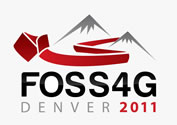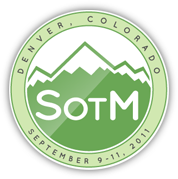Embracing Web 2.0 and GIS to Enhance Public Participation in Science
Recent decades have seen a dramatic shift towards transdisciplinary research. Such projects require a unique integration of skill and communication. The integration of academic disciplines resulting from these endeavors creates a unique challenge, particularly for data management and analysis. The explosion in availability of spatial data has further exacerbated this problem as researchers and the public alike are enticed by the utility of such data sets. With the advent of Web 2.0, the public is becoming increasingly interested in GIS and data exploration, often for no purpose other than personal edification. At the same time, researchers are showing a greater appreciation for “indigenous knowledge” and it’s ability to provide unique insight into old questions. Volunteered GIS (VGI) has been successful at engaging non-scientists in scientific exploits, though often with little or no methodology or purpose. Participatory GIS (PGIS) has sought to enhance the relationship between researchers and the public in order to solve problems; however it is often of limited utility for the researcher and even more frequently lacking a technical aspect.
Recent advances in technology and spatial analysis, in conjunction with a greater technological understanding by the public, make it possible to revisit a cooperative relationship between researchers and non-scientists. The availability of mobile devices and wireless communication permit the public to be more involved in research activities to a greater degree than in the past. Furthermore, the accuracy of these devices is rapidly improving, allowing us to address old questions of uncertainty and error in data collections. Such cooperation between researchers and the public integrates themes common to VGI and PGIS, to bring about a new paradigm in GIScience.
In this paper, I present a conceptual model for the development of a VGI system that incorporates the traditional role of researchers in spatial data analysis and exploration and the willingness of the public, through traditional PGIS, to be engaged in data collection and the research process. Borrowing on lessons learned from previous studies, this system attempts to address the old problems of data uncertainty through new technologies and analytical tools. This system allows for the two-way communication between researchers and the public for data collection, analysis, and ultimately dissemination of results. Enhancing the role of the public to participate in these types of projects can both improve the effectiveness of the research as well as stimulating greater interest in science and research.
I am a doctoral student in Geography at Michigan State University. My research focuses on adapting new computing technologies for use in an academic context.











